Hyundai Elantra N Line Vs Volkswagen Jetta GLI Comparison: Healthy Competition

Manufacturers still care about enthusiasts and we have proof.
Sedans cannot match up to the utility and road presence of a crossover. True. Also true, a crossover can’t handle nearly as well as a sedan or look good while doing it. While the sedan has fallen out of favor among buyers in favor of the crossover, it’s heartening to see automakers still care enough about it (and us) to make sportier versions of their regular ones.
Get a Quote on a New Hyundai Elantra N Line or Volkswagen Jetta GLIVolkswagen’s Jetta GLI has been around forever and is by far the best Jetta in the lineup has to offer. Plus, hailing from a brand that has produced greats like the Golf GTi and Sirocco R, the Jetta GLI will be a tough nut to crack for the rookie. But can it go toe to toe with the veteran or is the 2021 Hyundai Elantra N Line a second fiddle at best.
Powertrain and Driving Feel
Elantra: A 1.6-liter four-cylinder turbocharged powers the N Line. The same engine that powers numerous other cars in both Hyundai and Kia’s model lineups. It is available in various states of tune but here it makes 201 hp and 195 lb-ft of peak torque. It pairs with a seven-speed DCT and drives the front wheels. The 1.6-liter is a refined little engine and is barely audible at idle. It makes its peak torque between 1,500 and 4,500 rpm but despite its 201 hp, it lacks the punch you would expect from a 201 hp motor. Having said that, the Elantra gains speed rather quickly. But it lacks the sense of speed and drama which is essential when you don’t have a mountain of power to play with. You barely hear the engine at sedate speeds but it does hit a few sonorous notes as you race past 5,000 rom but it still sounds a tad muted.
The throttle response too is more in tune with the regular Elantra. Shifting to sport mode sharpens it up but it’s still not as sharp as Jetta’s. Relative to the regular Elantra, the suspension setup is firmer but still pliant enough to breeze through city streets without resistance. Most undulations are dealt with ease even the bigger ones mostly only audible. However, it is worth pointing out, the suspension is more ride biased rather than handling centric so you will feel the body roll in tighter bends. Steering feels light in the city and though it weighs up when as you speed up and in sport mode, the weight is just a notch below ideal. It does make quick direction changes easier but doesn’t provide as much feel.
SEE ALSO: 2021 Hyundai Elantra Review: Going Nitpicking, or at Least Trying ToLack of an LSD at the front means you need to be careful while accelerating out of corners as an open differential doesn’t match up to the grip levels an LSD delivers. It would be fun with a manual gearbox, which is available in the US.
Jetta: For a 2.0-liter turbo, the TFSI motor is plenty powerful. It makes 228 hp and a healthy 258 lb-ft of peak torque, 63 lb-ft more than the Elantra. It pairs with a six-speed manual which drives the front wheels but also comes with an LSD. The extra torque has a profound impact on how the GLI feels and responds. It feels tighter and solid and not just relative to the Elantra. As Kyle aptly puts it, the GLI is “a less practical Golf GTI.” Cars like the GLI are meant to be fun and nothing is more fun than compact dimensions with a powerful motor and a manual gearbox. And the one in here is precise enough to hurt.
Throws are short and slot in with a mechanical thunk that you never get tired of. The clutch too is light and precise. You recognize its bite point almost instantly and never have to hunt around for it again. If you want to teach someone heel and toe, this is the car to do it in. And this is coming from a Civic Type R fanatic.
It’s quick off the line and a quick throttle response also helps. The turbo motor makes its peak torque from 1,500 rpm just like the Elantra but here you feel every bit of it. Rowing through the gears as speeds climbs is smile-inducing but getting the rev-matching right every single time during downshifts thanks to that perfect pedal placement is downright euphoric. Then there is the sound. Admittedly, the sonorous exhaust note is synthesized through the speakers and does feel like cheating. But it sounds great, and you get used to it as it complements the way the Jetta moves.
In the corners, it feels balanced and steady. Body roll is minimal thanks to an impeccable suspension setup. The steering is sharp, well weighed, and deliberate. It requires more effort than the Elantra but rewards with positive feedback. Brakes are progressive and provide plenty of feel while the limited-slip diff guarantees the tightest line around corners almost every single time. There is not one thing that stands out in the GLI rather it’s how the whole package comes together to offer a rare confidence-inspiring driving package. Plus, the GLI leaves the reins completely to you. There is no auto-rev matching or other electronic trickery here. What I’m trying to say is, it feels organic and alive.
In and around the city, it drives like a regular Jetta with a slightly harsher ride and sharper dynamics. You will feel the bigger bumps and it’s best driven in sport mode. It sounds like a washing machine in Eco and Normal.
Bottom Line: While both the Elantra N Line and the Jetta GLI are both capable highway and city runners, the GLI outperforms the N Line when it comes to spirited driving and tackling the twisties.
Interior and Cabin Space
Elantra: Surprisingly, the cabin of the N Line you get here in Canada is quite bare. You do get the cloth/leather combination for the seats but there is no electric adjustment for the driver’s seat, a feature available on the US spec. Kyle rightly calls the move “stingy”. There is also no premium upholstery on the dash. The cabin appears sub-par and not of the quality you would expect especially given the overuse of bare plastic.
The seats though are sporty and offer great support and side bolstering. You also sit a lot closer to the ground than the Jetta for a more aggressive driving position. Apart from that it is as spacious and comfortable as the regular Elantra. You don’t get rear AC vents but you do get a sunroof and ample space in the rear to seat three adults and a decent-sized trunk.
Jetta: Volkswagen seems to have taken the sleeper in sleeper car a little too seriously for it’s a tad, vanilla, compared to the Elantra anyway. Kyle says the cabin “plays it safe,” and I agree. While the cabin doesn’t use any exotic materials, it feels solid and the soft-touch plastic and red stitching all around feel quite premium. Also, everything is where it should be and is ergonomically sound.
SEE ALSO: 2020 Volkswagen Jetta Review: All Pumpkin, No SpiceKyle feels “You sit about four inches too high. So headspace feels at a premium.” Taller drivers could feel the pinch but for anyone up to six feet will not feel constrained for head space. It could however benefit from a lower seat height even if by only a couple of inches. Just like the Elantra, there is ample space in the back to seat three adults and a massive trunk.
Bottom Line: While both the GLI and the N Line offer the same amount of cabin space as their regular counterparts, the Jetta’s cabin feels more premium and better put together.
Tech and Features
Elantra: You don’t have the fully digital 10.25-inch instrument cluster but that’s okay for the analog dials look simply gorgeous. Instead of the 10.25-inch touchscreen you get the 8.0-inch system which offers wireless Apple CarPlay and Android which isn’t available with the larger screen. In our opinion, you’re better off with the smaller screen because of that.
The 10.25-inch instrument cluster is also not available here but you don’t mind since the analog dials look absolutely gorgeous. But what it lacks upholstery, it makes up in safety tech. Along with the standard front collision warning, it also offers brake assist, lane-keeping, and following assist, blind-spot detection with rear cross-traffic alert and even driver attention warning are all part of the standard kit. Safe exit and high-beam assist are also part of standard equipment.
Jetta: Where the Elantra offers no USB-C slots, the Jetta goes completely the other way and offers USB-C slots only. Good thing then that wireless charging comes in as standard. As do wireless Android Auto and Apple CarPlay. The Jetta too comes with an 8.0-inch touchscreen infotainment system just like the Elantra. But the MIB system here is slower to respond compared to the Elantra.
The all-digital instrument cluster though looks brilliant and offers great functionality and customization. The display is crisp and well-defined. As for driver assistance systems, it doesn’t offer features like driver attention warning, safe exit assist, and lane-following assist like the Elantra, it does offer adaptive cruise control instead. Plus, features like auto emergency braking and blind-spot detection with rear cross-traffic alert are also part of the package.
Bottom Line: Both are nearly identical in terms of features and safety equipment but the omission of the adaptive cruise control from the Elantra is a glaring one.
Styling
Elantra: I have to say, the Elantra looks best with the N Line styling. An angular styling and a low nose suit the N Line more than the regular version. Add to that a vibrant red paint and you get a car that has the styling to go with its sporty credentials.
Kyle feels that Hyundai should have been more adventurous with the colors this being the performance version and all. He maintains that the color palette including the violent orange is monochrome at best. Also, “That low nose makes it look a solid half-size smaller than the Jetta.” which it does.
Jetta: Kyle’s quip “It’s certainly a car-shaped car.” is an apt description for Jetta’s styling. The red GLI badge and stripe on the grille however, lend the Jetta some much-needed character.
But an almost invisible styling also works for the GLI as it is a perfect disguise for a sleeper car of GLI’s caliber.
Bottom Line: While styling is subjective as it should be, I personally prefer the Jetta’s plain jane looks for it hides the perfect monster beneath.
Pricing
Elantra: In the US, the Elantra is available with both manual and DCT gearboxes unlike here in Canada. The N Line starts from $25,105 including destination for the manual version while an upgrade to DCT costs $1,100 extra. North of the border, the N Line starts from $28,954 including destination, and is only available with the seven-speed DCT gearbox.
Jetta: In the US you can have the GLI in S or a superior Autobahn trim. Both trims are available with a six-speed manual or a seven-speed DSG. The S trim starts from $27,340 including destination while the upgrade to DSG costs just $800, not that we recommend it. Opting for the Autobahn trim sets you back by $31,740 for the manual but you do gain Dynamic Chassis Control and adaptive cruise control in the process. North of the border, the GLI is only available in one trim but both the manual and DSG gearboxes. Prices start from $32,745 including destination for the manual while the DSG upgrade costs $1,582. This is equivalent to the Autobahn trim of the US.
Bottom Line: The Elantra is much more affordable than the Jetta but it also offers a less potent powertrain and no adaptive cruise control. Plus, there is no manual transmission in Canada.
Verdict: Hyundai Elantra N Line vs Volkswagen Jetta GLI
The Hyundai Elantra N line is an honest and commendable attempt at a hot compact sedan. But the lack of a manual gearbox hampers its appeal. Yes, the DCT makes the N Line more approachable and friendlier for beginners but it lacks the level of engagement a manual gearbox provides which is the fun part in this segment. Compared to the Jetta, apart from the on-point styling, the Elantra fails to make a lasting impression. Nevertheless, the N Line still is a viable option for someone looking for decent performance on a tight budget. And if you’re reading this in the US, we recommend the manual.
As for the GLI, we cannot get enough of it. While the Jetta is considerably more expensive than the Elantra especially when you compare the US Autobahn trim, it is also significantly better equipped. You get a better laid-out dash, adaptive cruise control, and of course, the impeccable driving setup and a more powerful engine which makes spending the extra dough worth it. We cannot recommend opting for the manual enough, if you can’t drive stick however, the GLI is available with DSG in both markets.
Become an AutoGuide insider. Get the latest from the automotive world first by subscribing to our newsletter here.

More by Kshitij Sharma




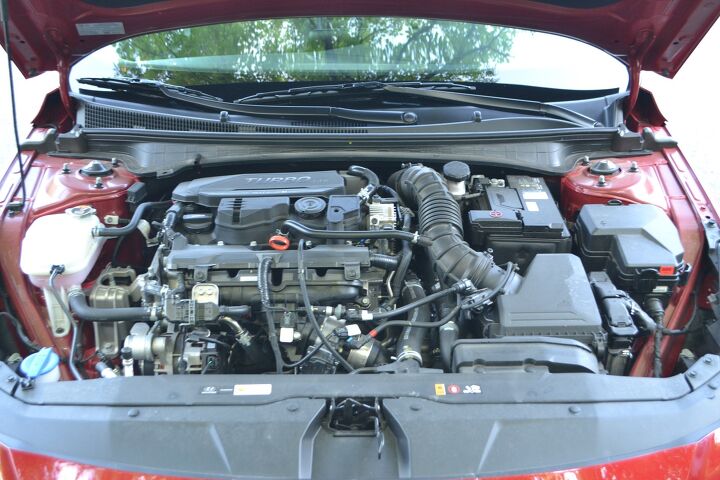






























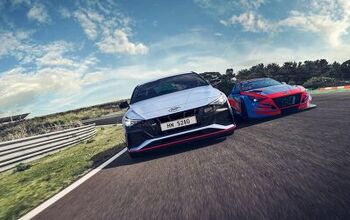

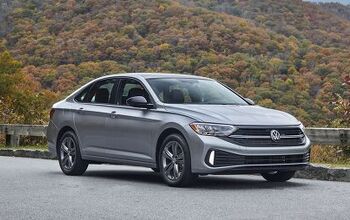

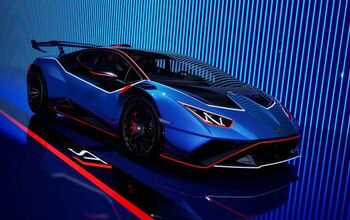

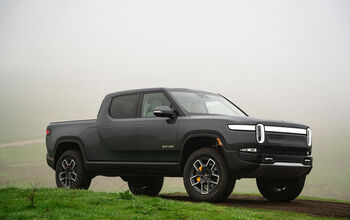



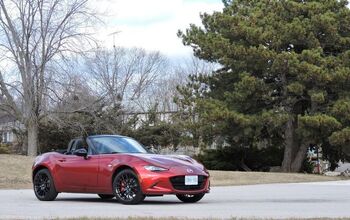



Comments
Join the conversation